MOMENTUM UPDATE
![]()
FROM THE DESK OF DR. MICHAEL JOHNS
CHIEF EXECUTIVE OFFICER OF THE
ROBERT W. WOODRUFF HEALTH SCIENCES CENTER

November 2006
THE FUTURE OF ALLOPATHIC MEDICINE, EMORY, AND THE IPOD
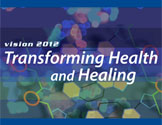 Just a little over a week ago, I had the privilege of representing Emory – representing all of you – at the annual meeting of the Association of American Medical Colleges in Seattle. The title of my talk was “The Future of Allopathic Medicine.” It’s a mouthful, but it gave me the chance to crystallize some of my thoughts about why this is such an extraordinary, transformative moment in the history of health care.
Just a little over a week ago, I had the privilege of representing Emory – representing all of you – at the annual meeting of the Association of American Medical Colleges in Seattle. The title of my talk was “The Future of Allopathic Medicine.” It’s a mouthful, but it gave me the chance to crystallize some of my thoughts about why this is such an extraordinary, transformative moment in the history of health care.
It also left me feeling more convinced than ever that this is Emory’s moment – that in the next decade, all of the pieces in Vision 2012 will come together right here in Atlanta to construct a new and dazzling approach to diagnosing, treating, and preventing illness. We will, in fact, not only maintain health, we will pioneer revolutionary new ways to enhance and optimize it.
In fifty years, our successors may look back on us with almost as much pity as we look back on the 19th century country doctor and his little black bag. The secret of that little black bag, of course, was that it really only held one medical tool – a stethoscope. Our arsenal today is much more powerful. But even so, it is puny compared to what we will have a couple of decades hence.
As I discussed in my talk, we live in a time when society and the world are being changed by major forces. We are all subject to ever rising societal expectations – in the court of consumer opinion, we are held to a high standard. The world is shrinking due to globalization, with both good and bad consequences. Technology and scientific knowledge is accelerating – think nanotechnology, where our joint programs at Emory and Georgia Tech have emerged as a worldwide center for healthcare applications. The traditional business face of healthcare is changing. Now you can go into a drug store in many areas around the country and pick up a bottle of shampoo, some aspirin and, oh yes – a quick medical checkup in the “Minute Clinic.”
Add all of this together and you have a prescription (pun intended) for massive, seismic, ongoing change. What energizes me is knowing that here at Emory, we have been thinking hard for years now about how to anticipate and harness these forces, and use them to propel us forward into a leadership position.
I think of it as Convergence, followed by Emergence.
We actually have a good model to follow in the way Apple created the iPod – one of the best selling, most innovative consumer products of the past several decades. Apple did not have all the expertise in-house. Far from it. What Apple had was the vision. And so it systematically went out and acquired what it needed in the form of technologies, intellectual property, human talent, and even companies.
All of those elements converged – and then the iPod emerged.
That’s what we are doing here in the Woodruff Health Sciences Center. It is exciting to consider all the pieces we now have in play, in every corner of our system, from Clifton Road to Midtown. A lot of talent is converging with a wealth of resources and assets. And at the end, what we will see emerging is a dramatically new Emory health sciences enterprise – one that will make Atlanta proud, and engage the imagination and admiration of the nation and the world.
If we do this right, our colleagues will be flying into Hartsfield-Jackson International Airport, the world’s busiest, to study us. We do have it within our grasp to take medicine to a new level – to transform health and healing.
Enjoy this great adventure!
IMPLEMENTING CENTERS OF EXCELLENCE
In June of this year, I gave a presentation outlining the ways in which we are working to make the Woodruff Health Sciences Center a model to transform health and healing for the 21st century. A key component of this vision is the creation of patient-focused centers of excellence, with the goal of positioning the WHSC to be a top leader in each of these specialty areas within the next five years.
I am pleased to announce that we have recently made initial investments in the first three centers of excellence: the Emory Transplant Center, the Emory Comprehensive Neuroscience Center, and the Emory Heart and Vascular Center.
Each of these centers is being funded for a three-year period. During this time, each center’s progress will be assessed annually by the WHSC leadership team, as measured against outcomes-based metrics currently being developed with help from the Strategic Planning Office. These centers will also be evaluated based on their integration into system-wide priorities and themes, including patient quality and safety, bioinformatics, and predictive health. Each center must also work closely with WHSC development officers to attract philanthropic support, both to supplement the WHSC’s investment and to accelerate achievement of center goals.
LEYLAND-JONES APPOINTED DIRECTOR OF WCI
 I am proud to announce the appointment of Brian Leyland-Jones, MD, PhD, as Associate Vice President and Director of the Winship Cancer Institute, effective January 1, 2007.
I am proud to announce the appointment of Brian Leyland-Jones, MD, PhD, as Associate Vice President and Director of the Winship Cancer Institute, effective January 1, 2007. Internationally recognized for his work in individualized cancer therapies and the development of novel clinical trials, Dr. Leyland-Jones is currently the Minda de Gunzberg Chair in Oncology and Professor of Medicine at McGill University in Montreal, Canada. His career has included a clinical pharmacology fellowship at Cornell University and a medical oncology fellowship at Memorial Sloan-Kettering Cancer Center, where he became a member of the academic staff and focused his research on early clinical evaluation of new anti-cancer compounds. In 1983, he moved to the National Cancer Institute (NCI) to head the Developmental Chemotherapy section. During his time with the NCI, he was responsible for the overall development of approximately 70 anti-cancer compounds in various stages of transition from in-vitro screening to Phase III clinical trials.
I am encouraged and excited by the clinical, scientific and administrative expertise Dr. Leyland-Jones will bring to the Winship Cancer Institute.
RESEARCH APPRECIATION DAY, DECEMBER 6, INCLUDING FUTURE MAKERS LECTURE
 You are invited to join legislators, community leaders, donors, and other expected attendees to Emory Research Appreciation Day on Wednesday, December 6. The theme is Transforming Health through Discovery. The goal of the day is to celebrate our own researchers and to help our visitors understand our researchers’ important contributions toward the WHSC’s core purpose of Making People Healthy. Speakers throughout the day include Dr. Steven Wartman, President of the Association of Academic Health Centers; Dr. Darrell Kirch, President of the Association of American Medical Colleges; and Dr. William Brody (pictured on left), President of Johns Hopkins University, who will give a Future Makers lecture, "Uncommon Sense and Innovation," at 4:00 p.m. in the WHSCAB auditorium, followed by a reception on the WHSCAB Plaza.
You are invited to join legislators, community leaders, donors, and other expected attendees to Emory Research Appreciation Day on Wednesday, December 6. The theme is Transforming Health through Discovery. The goal of the day is to celebrate our own researchers and to help our visitors understand our researchers’ important contributions toward the WHSC’s core purpose of Making People Healthy. Speakers throughout the day include Dr. Steven Wartman, President of the Association of Academic Health Centers; Dr. Darrell Kirch, President of the Association of American Medical Colleges; and Dr. William Brody (pictured on left), President of Johns Hopkins University, who will give a Future Makers lecture, "Uncommon Sense and Innovation," at 4:00 p.m. in the WHSCAB auditorium, followed by a reception on the WHSCAB Plaza.
There will be poster presentations on the WHSCAB Plaza from many units of the WHSC on view from 8:00 a.m. – 4:00 p.m. Throughout the day, attendees will have the opportunity to tour various labs and centers, including the drug discovery robotics screening center in the dental building, the brain lab for neurodegenerative diseases in the Whitehead Biomedical Research Building, the islet cell lab in the Woodruff Research Building, and Yerkes National Primate Research Center.
For more information, visit http://www.whsc.emory.edu/researchday.
EVIDENCE-BASED MEDICINE
I have been fortunate to be a part of the Institute of Medicine’s roundtable on evidence-based medicine (EBM), co-chairing the evidence application working group and serving on several of the related committees. The application of EBM is integral to health care quality. We’ve formed an excellent internal group of advisors comprised of members from the WHSC: William Bornstein, Benjamin Druss, Kimberly Rask, Mark Williams, Rick Gitomer, and Gary Teal. Together, we are looking at how we define quality - delivering the best possible outcomes as safely as possible and with the best possible service. To achieve that goal, we need to deliver care based upon the best available evidence pertinent to the patient’s problems and individual values. Yet, national data show that on the average American patients receive care based on the best available evidence only about 55% of the time (the best known and largest studies on this are from the Rand Corporation and have been published in a series of papers in the New England Journal of Medicine). Those data are based on problems for which there is good evidence. In addition, there is not good evidence for the best way to treat many, and perhaps the majority, of problems.
We believe that there are a number of important issues and points:
- There is not good evidence about what works best to improve the use of best evidence when such evidence is available—i.e., we need to hold implementation strategies to the same evidentiary standards as we apply to the evidence being implemented. This requires much more research. For example, will payment incentives improve use of EBM (i.e., “pay for performance”)? To what extent will information technology help? If IT will help, what are the most effective ways to implement?
- How do patient preferences and biases and treatment (vs. non-treatment) predispositions play into this? For example, patients expect antibiotics for upper respiratory infection symptoms even though evidence shows more harm than good. In turn, physicians prefer to treat rather than not to treat. This raises large patient education issues.
- Might quality incentives interfere with patient preferences—e.g., if providers are incentivized (financially or otherwise) to achieve certain measures, might they press patients to accept treatments not aligned with their preferences or values?
- How does the liability system play into this?
- To what extent is it appropriate to extrapolate from one population to another (e.g., to women based on a study done in men, or to African-Americans based on studies done in whites)?
- How do we account for individual variation? For example, if two drugs are equally efficacious in large studies, is it possible that there are different but equal-sized subsets that respond better to one or the other?
- Although we are not optimally implementing the evidence currently available, we need to generate even more evidence and do so in the process of care by collecting more meaningful data in forms that can be aggregated and analyzed.
We will be incorporating what we learn in this area of evidence-based medicine as we plan for the future and I’ll share more on this important endeavor as we move forward.
GLOBAL GOVERNMENT HEALTH PARTNERS LEADERSHIP FORUM 2006
I’m excited by the number of international initiatives happening across Emory and the WHSC, including the Global Government Health Partners Leadership Forum 2006, The Breaking Point: Human Resources for Health, which was held last week at The Carter Center. Hosted by The Nell Hodgson Woodruff School of Nursing’s Lillian Carter Center for International Nursing, this invitation only conference had as its overall aim to enhance the leadership capacity of government chief nursing and medical officers in an effort to address the global and national shortages of health care workers. School of Nursing Dean Marla Salmon served as co-chair along with Dr. Jeffrey Koplan, VP for Academic Health Affairs. Key speakers included Dr. David Nabarro from the United Nations, as well as speakers from the World Health Organization and World Trade Organization, among many others. There were CMO’s and CNO’s representing more than 110 countries at this significant event.
PENETRATING POINT: NEW TREATMENT FOR TRAUMATIC BRAIN INJURY
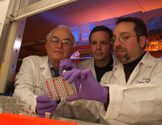 As many of you know, I’ve challenged all members of the WHSC to go beyond the cutting edge and aim for the penetrating point. I can honestly say that many of you are doing just that and I want to share one recent example which includes the first new medical therapy for traumatic brain injury in more than 30 years.
As many of you know, I’ve challenged all members of the WHSC to go beyond the cutting edge and aim for the penetrating point. I can honestly say that many of you are doing just that and I want to share one recent example which includes the first new medical therapy for traumatic brain injury in more than 30 years.
As reported in the October issue of Annals of Emergency Medicine, faculty in emergency medicine have found that progesterone appears to reduce the risk of death and degree of disability in patients with head injury. Emergency medicine faculty Arthur Kellermann, Donald Stein, David Wright, and others conducted this phase II study of 100 patients at Grady Hospital, with funding support from the National Institute of Neurological Disorders and Stroke. They found a 50% reduction in the death rate in the progesterone-treated group and significant improvement in functional outcome among patients enrolled with a moderate brain injury. Dr. Stein discovered the neuroprotective properties of progesterone and has been studying it in the lab for 20 years. Progesterone is a promising treatment because it is inexpensive and widely available and has a long track record of safe use in humans to treat other diseases. The team is now planning a large, multi-center, phase III trial. They also hope to conduct a pilot trial of progesterone to treat patients with acute stroke.
Without a doubt, this is “penetrating point” work with potential to benefit many thousands of patients.
INSTITUTE OF MEDICINE ELECTS ORENSTEIN AS NEW MEMBER
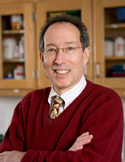 I am very pleased to announce that the Institute of Medicine (IOM) has elected vaccine specialist Walter Orenstein to its 2006 class of 65 new members, bringing Emory’s total IOM membership to 20. Twenty members are impressive, but the number is even more impressive when you realize Emory had only one member in 1995!
I am very pleased to announce that the Institute of Medicine (IOM) has elected vaccine specialist Walter Orenstein to its 2006 class of 65 new members, bringing Emory’s total IOM membership to 20. Twenty members are impressive, but the number is even more impressive when you realize Emory had only one member in 1995!
Dr. Orenstein directs the Emory Program for Vaccine Policy and Development, is associate director of the Emory Vaccine Center, and holds appointments in both medicine and public health. Dr. Orenstein came to Emory in 2004 from the CDC, where he led a variety of initiatives influencing vaccine policy for the nation and the world. He was consultant to the World Health Organization and to the Pan American Health Organization for programs in polio and smallpox eradication and measles control. He was Assistant Surgeon General of the U.S. Public Health Service. As CDC liaison member to the National Vaccine Advisory Committee, he played a major role in developing immunization policy documents, including an article that became the blueprint for today’s immunization program. He was CDC liaison to the American Academy of Pediatrics Committee on Infectious Diseases (the major immunization policy-making body for private pediatricians), he led efforts to implement the Vaccines for Children Program that today overcomes financial barriers to vaccine access for some 40% of the country’s children, and he fostered development of a major effort to address vaccine safety concerns. He is also member of the international editorial board for the journal Vaccine, and he co-edited the fourth edition of Vaccines, a 1,600-page volume that is the leading textbook in the field.
Congratulations to Dr. Orenstein for his past (and future) accomplishments and for this high honor of IOM membership.
BERKELHAMER HEADS AMERICAN ACADEMY OF PEDIATRICS
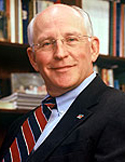 We are extremely proud of the relationship that Emory and the WHSC has with Children’s Healthcare of Atlanta so I am equally proud to share the news that Dr. Jay Berkelhamer, Senior Vice President of Medical Affairs at Children’s Healthcare of Atlanta and Clinical Professor in both Emory and Morehouse schools of medicine, took office as president of the American Academy of Pediatrics (AAP), the nation’s largest pediatric organization, with 60,000 members. Dr. Berkelhamer has been a national spokesperson for the AAP and an advocate for children’s issues throughout his career. He has identified three front-burner issues currently facing children: access to care, quality of care, and financial implications surrounding health care for children, including private insurance and Medicaid.
We are extremely proud of the relationship that Emory and the WHSC has with Children’s Healthcare of Atlanta so I am equally proud to share the news that Dr. Jay Berkelhamer, Senior Vice President of Medical Affairs at Children’s Healthcare of Atlanta and Clinical Professor in both Emory and Morehouse schools of medicine, took office as president of the American Academy of Pediatrics (AAP), the nation’s largest pediatric organization, with 60,000 members. Dr. Berkelhamer has been a national spokesperson for the AAP and an advocate for children’s issues throughout his career. He has identified three front-burner issues currently facing children: access to care, quality of care, and financial implications surrounding health care for children, including private insurance and Medicaid.
Dr. Berkelhamer has an impressive track record for getting things accomplished. When he was chair of pediatrics at Henry Ford Health System in Detroit, he established a Child Health Network and worked with University of Michigan to start a managed care program for special needs children. During his tenure at Children’s, Dr. Berkelhamer has helped lead the organization in becoming one of the nation’s best pediatric hospitals—last year, Child magazine named it as one of the top 10 in the country.
GOODWIN APPOINTED ASSISTANT VICE PRESIDENT AND DIRECTOR OF MEDIA RELATIONS FOR HEALTH SCIENCES COMMUNICATIONS
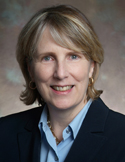 I am delighted to announce that Sarah Goodwin has returned to Emory as the new Assistant Vice President for Health Sciences Communications and Director of Media Relations, a position critical to our goal of raising our profile in media coverage on a national and international scale. Sarah joins Jeff Molter, recently appointed Associate Vice President of Health Sciences Communications, in helping lead strategy for both internal and external communications.
I am delighted to announce that Sarah Goodwin has returned to Emory as the new Assistant Vice President for Health Sciences Communications and Director of Media Relations, a position critical to our goal of raising our profile in media coverage on a national and international scale. Sarah joins Jeff Molter, recently appointed Associate Vice President of Health Sciences Communications, in helping lead strategy for both internal and external communications.
Like me, many of you may already know Sarah from her previous roles at Emory, in both Health Sciences and University Communications. Sarah has more than 25 years’ experience in communications in health care and higher education. She comes here from the American Cancer Society (ACS), where she directed organizational communications for its 7,000 employees nationwide. Before ACS, she was vice president at Greystone.Net, an Atlanta-based web “boutique” firm focused on marketing for hospitals and health care organizations.
SECOND ANNUAL SYMPOSIUM ON PREDICTIVE HEALTH
The Emory/Georgia Tech Predictive Health Institute is presenting the second annual symposium on predictive health on December 18-19 at the Emory Conference Center. Last year’s symposium was a rousing success and this year’s symposium promises to engage biomedical scientists and leading thinkers in conversations about new approaches in biomedicine and how we can make it work. The keynote speaker is Dr. David Schwartz, Director of the NIH’s National Institute of Environmental Health Services and the National Toxicology Program. In addition to presenters from Emory and Georgia Tech, other speakers include scientists from Genentech, MIT, Johns Hopkins, University of Arizona, the CDC, and the National Institute of Diabetes and Digestive and Kidney Diseases. For more information, please contact Jennifer Vasquez at 404-712-2660 or jennifer.vazquez@emory.edu.
ITEMS OF NOTE
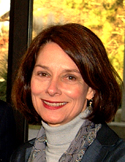 |
Una Newman, Senior Marketing Director for Emory Healthcare, has been appointed vice chair of the Chief Marketing Officer Council of the University HealthSystem (UHC) Consortium, a group comprising the nation’s leading academic medical centers, including Emory University Hospital. |
 |
Neurosurgeon and CNN journalist Sanjay Gupta received an Emmy in September for “Charity Hospital,” a segment airing in September 2005 and showing the plight of dozens of doctors, nurses, staff, and patients stranded for days at this New Orleans facility after Hurricane Katrina. |
 |
Otolaryngologist John Delgaudio (far left), 2005 Woodruff Leadership Academy (WLA) Fellow, received the Golden Head Mirror Award at the annual meeting of the American Rhinologic Society (ARS) in September for meritorious teaching and service in rhinology. Michael Sillers, MD, president of the ARS, presented the award which has been bestowed 94 times worldwide since its inception 58 years ago. I am particularly proud when I see a former WLA Fellow, like Dr. Delgaudio, not only exhibiting excellent leadership skills, but being recognized for them as well. |
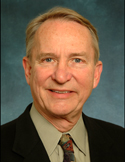 |
Tuesday, November 28, at 7 PM, Georgia Public Broadcasting (channel 8) will air a repeat showing of the Georgia Weekly with Dr. Kenneth Brigham and myself discussing predictive health. |
UPCOMING NOTEWORTHY EVENTS
As always, there are a number of exciting events happening not just on the Emory campus, but on the Emory Crawford Long Hospital campus, and in the local area. Here are just a few:
• The Frances Glenn Mayson Symposium on maternal, fetal, and neonatal medicine will be held November 17, at the Agnes Raoul Glenn Building auditorium on the Emory Crawford Long campus. Keynote speaker Jay Iams, a maternal-fetal specialist from Ohio State University, will lead the program with case studies in prevention of preterm birth. To register or for information on continuing education credits in medicine or nursing, please call 404-778-5050 or visit www.emoryhealthcare.org/news_events/events/events/FGM2004-1.html
• The 2006 Advances in Urology Symposium, hosted by the Men’s Health Center, will be held December 1-2 at the Inter-Continental Buckhead Hotel in Atlanta. Topics include male infertility, radiation therapy for prostate cancer, and advances in therapies for kidney cancer, among others. For more information, please call the Continuing Medical Education office at 404-727-5695.
LEADERSHIP THOUGHTS: THE ART OF BALANCE
All of us at one time or another have tried to balance objects. I can remember sitting at dinner in a restaurant and noticing a child trying to balance a spoon on a fork. Ronnie Jowers, our CFO in the Woodruff Health Sciences Center, is an accomplished “balancer” of objects. He can place a golf club on his chin and suspend it up in the air. He can take a heavy chair and balance in the palm of his hand. Ronnie has often said to me that you can balance anything if you work hard enough at it.
Many of us face a huge challenge in balancing our work and fun while at work. Some people say if it is work, then it should not be fun. I counter that by saying that if your work provides you with personal satisfaction, then there is definitely a fun component to it. Why is fun so important? It is the balance that is needed for each of us. The American Institute of Stress reported some years back that as many as 1 million people are absent from work in our country on any given day due to stress. Other studies have shown that employees who laugh together, work better together, are more inventive, and definitely stay together much longer than those who can not find fun in their jobs.
There are many ways to reduce stress. Some of the simpler ways include taking deep breaths periodically throughout the day, stretching unused as well as overused muscles several times during the day, and trying to maintain a positive attitude no matter what you encounter while at work.
Sincerely,
Michael M.E. Johns, MD
CEO, Woodruff Health Sciences Center